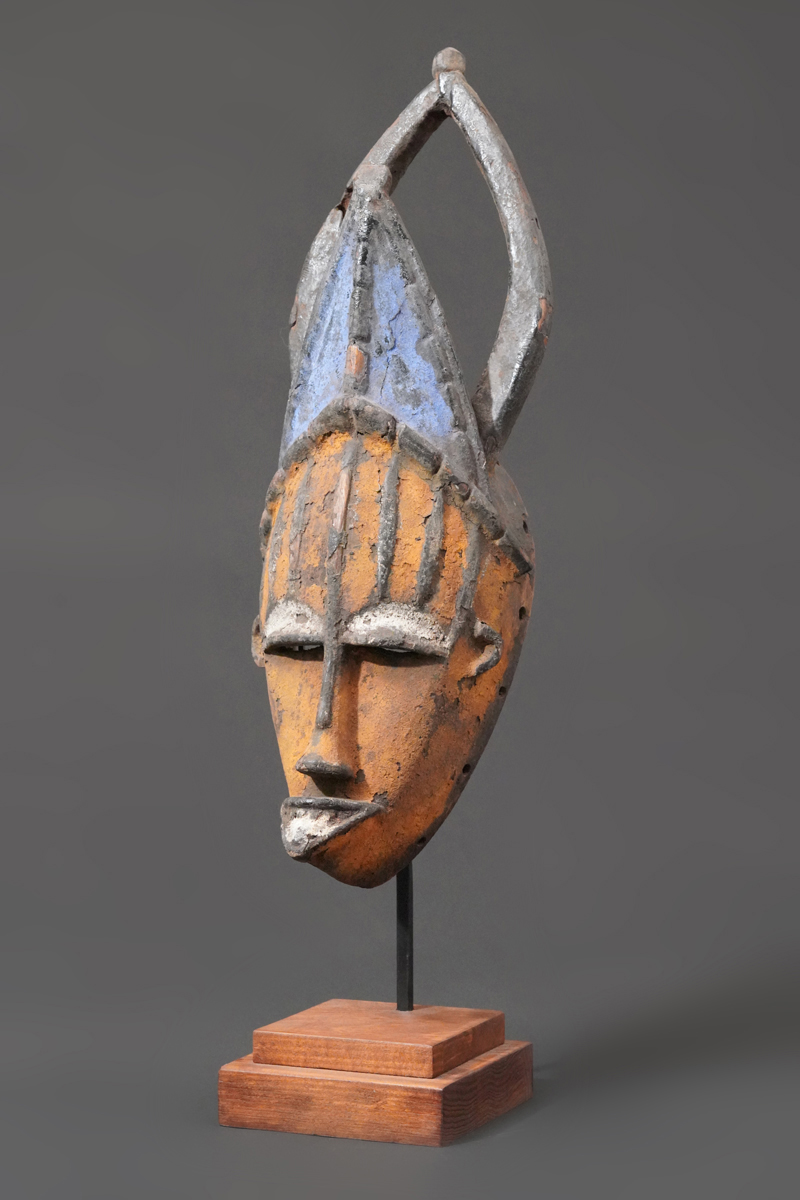|
An interesting Urhobo mask from Nigeria. The elongated oval shape tapers towards the chin, the facial features are highly abstracted and mysterious. The head is extended by two animal horns. An ornamental band runs vertically on the forehead and across the bridge of the nose. Oblique almond eyes pierced, the mouth shows two rows of teeth The yellowish-brown patina is fragmented due to age, white kaolin pigments on the teeth. Provenance Arnd Klinge Collection, Potsdam. Urhobo masks are part of the rich cultural heritage of the Urhobo people, who primarily reside in the Niger Delta region of Nigeria. The Urhobo are one of the ethnic groups in southern Nigeria, with their territory spread across Delta State and parts of neighboring states like Edo and Bayelsa. Urhobo masks, like those of many other ethnic groups in West Africa, are significant for their symbolic and ceremonial roles. They are used in various rituals, festivals, and traditional performances that connect the physical world with the spiritual and ancestral realms. The Urhobo, like many other peoples of the Niger Delta, have a deep respect for ancestral spirits, deities, and natural forces, and masks play a crucial part in expressing and honoring these entities. In her review of a closely related Urhobo mask in the Musée Barbier-Mueller in Geneva, Hahner-Herzog (1997: pl. 46) notes: "The works of the Urhobo, a small Edo-speaking ethnic group living in the northwestern part of the Niger Delta, are little known but of high aesthetic quality. They include clay and wooden sculptures honouring ancestors and supernatural forces, as well as masks associated with water and earth spirits. [...] "The available information on the meaning of the mask is varied, but points to an underlying connection with Ohworu, a powerful water spirit. On the one hand, the mask is described as one of the 'children of the spirit' (emedjo) who appear when the Niger River reaches its highest level to bring the 'blessing of deep water' to the villages. On the other hand, this type of mask is said to represent a 'girl with a youthful body' (omotokpokpo). The latter, according to Perkins Foss, implies a girl of marriageable age (opha) who is under the protection of the water spirits and, when presented as a bride, wears an elaborate hairstyle, as indicated in the mask by the gracefully curved structure and horn-like appendages." Lit: Sotheby, catalogue text. sold Height: 47 cm |
 photo: wolfgang-jaenicke.com, for more information, please write us an e-mail with the identification number of the photo identification no. BBD002358.jpg |